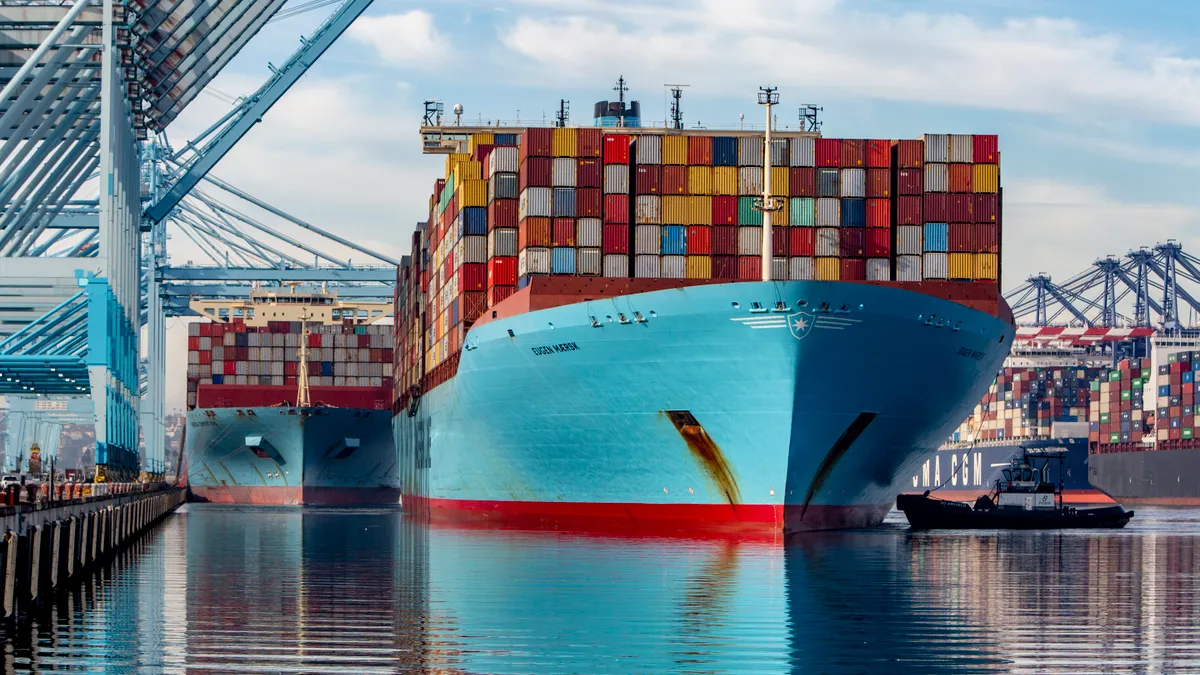Dive Brief:
- Import levels at U.S. ports, which have dropped significantly across the country as a result of the pandemic, are expected to remain lower than last year heading into the fall, according to a new forecast from the Global Port Tracker published by the National Retail Federation (NRF) and Hackett Associates.
- "Economic indicators show that the recession brought on by the pandemic may be easing, but retailers are being conservative with the amount of merchandise they import this year," NRF VP for Supply Chain and Customs Policy Jonathan Gold said. "The outlook for imports is slowly improving, but these are still some of the lowest numbers we’ve seen in years."
- U.S. ports handled 1.53 million TEUs in May, down 17% year over year (YoY). June is estimated at 1.69 million TEUs, down almost 6% compared to last year. The forecast shows October being the busiest month of peak season, with 1.7 million TEUs expected to be handled (an almost 10% YoY drop), which would make it the lowest peak since 2014.
Dive Insight:
Retailers are faced with fairly unpredictable consumer demand and a volatile freight market as states begin to reopen stores and restaurants, while news of surging coronavirus cases continues.
"We’re starting to go out to eat and buy clothing again, but how sustainable is that?" Hackett Associates Founder Ben Hackett said in a statement. "The danger is that the rising number of virus infections is leading to renewed restrictions, which may cause demand to weaken again."
Many retailers will also have to work their way through unsold inventory from the time their stores were closed. A 14% decline in retail sales in April pushed the national inventory-to-sales ratio to a historic apex.
The Port of Oakland is one of the only ports to have reported its June figures, and the facility actually saw an almost 2% increase in loaded import volume compared to the same month last year. This comes after the port saw a nearly 15% YoY decrease in loaded imports in May.
Ocean carriers pulled capacity as demand for ocean cargo decreased in the first half of 2020 in an attempt to keep their rates aloft. This has worked well on some trade lanes, including the Transpacific. But other lanes, such as the Asia-East Coast South America, have seen rates slide, according to the latest release from Sea-Intelligence.













